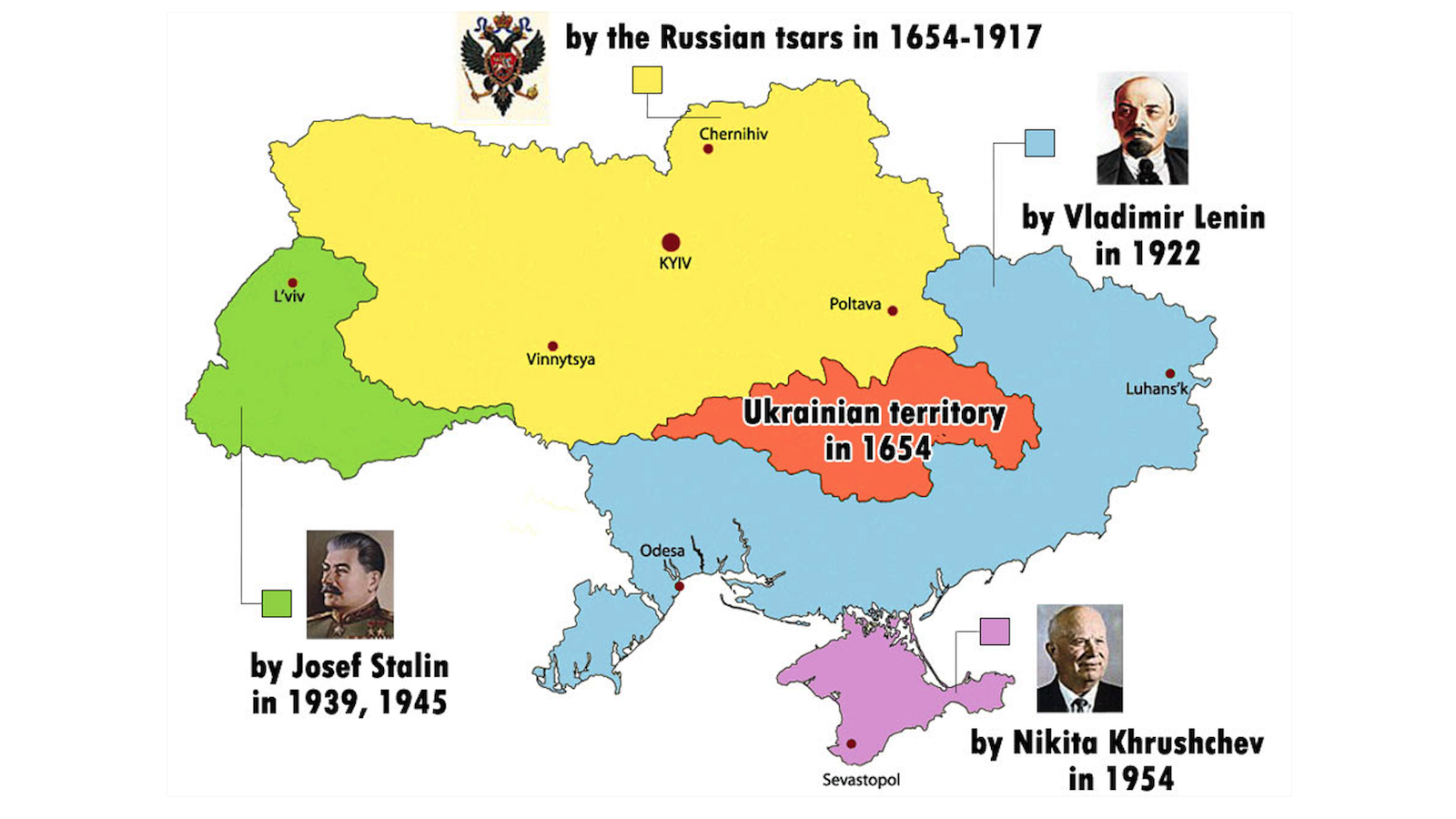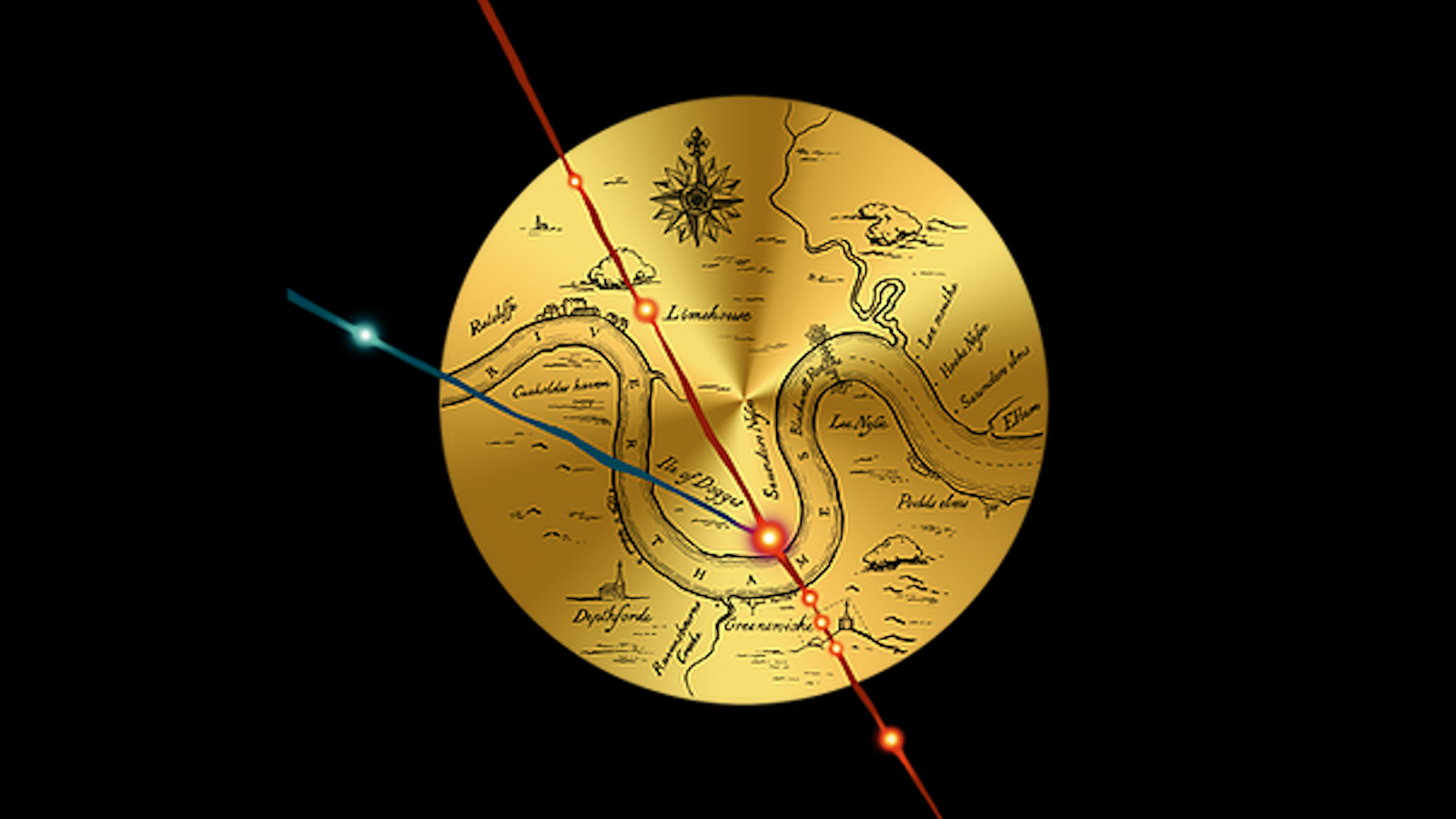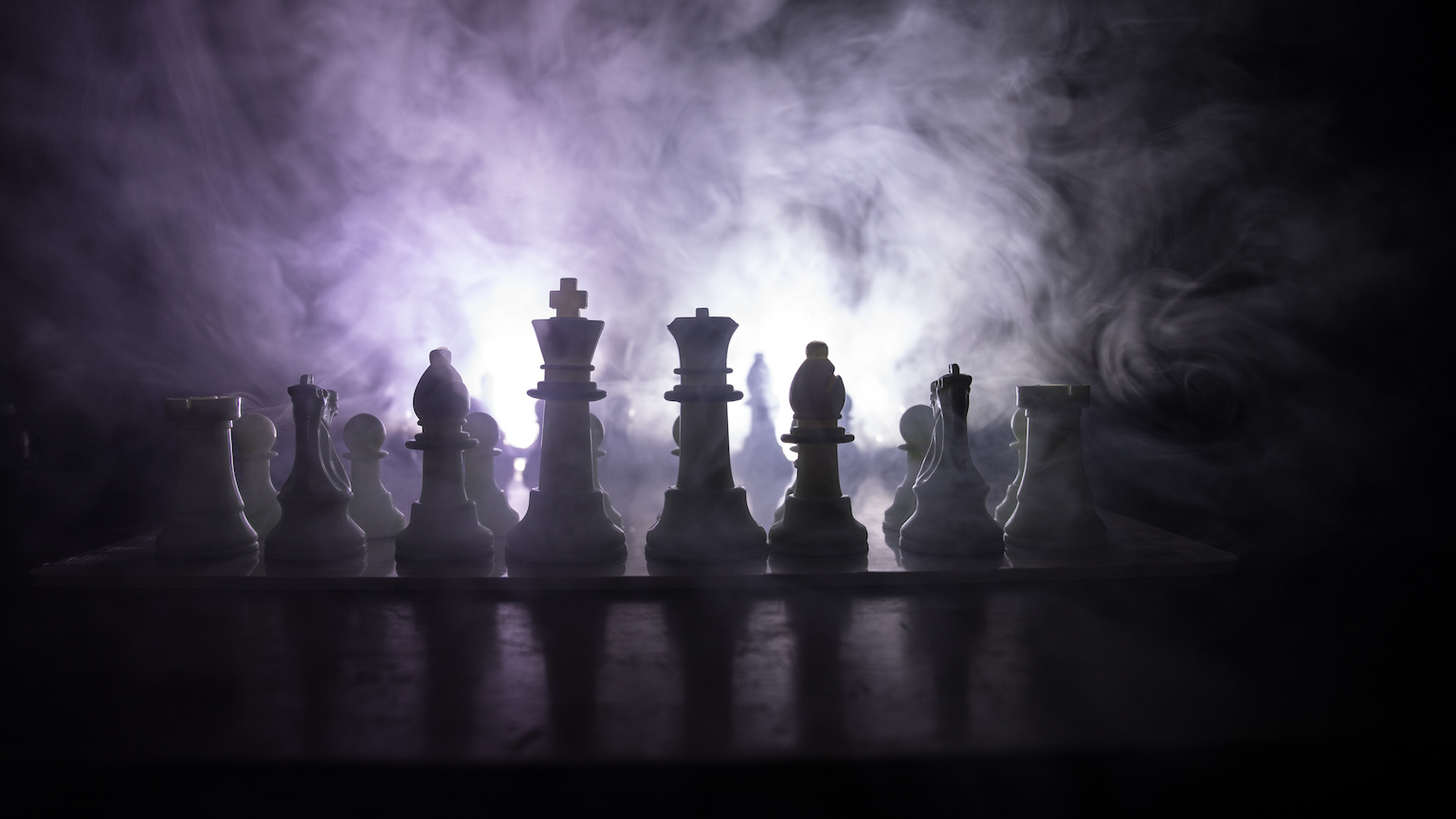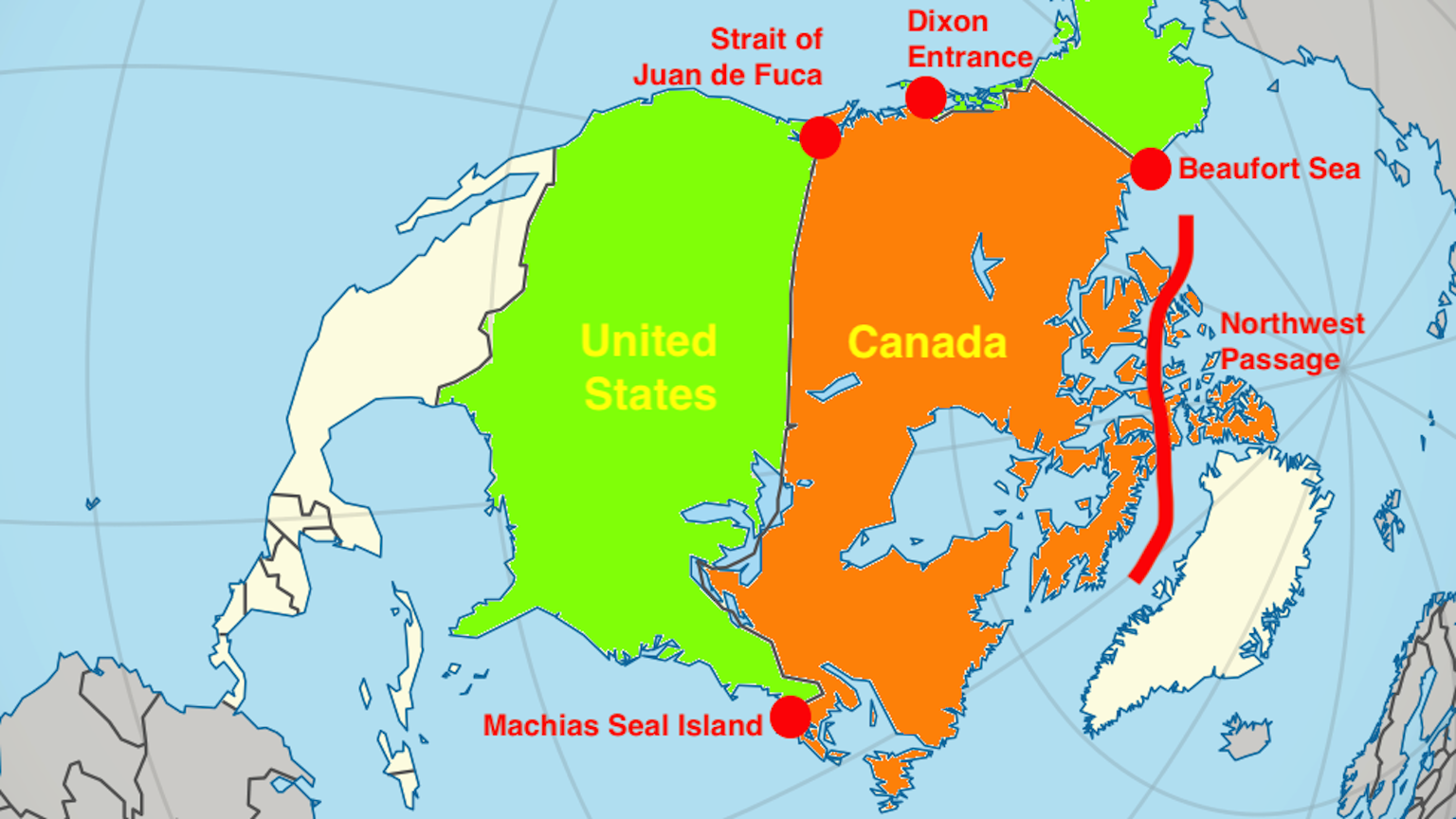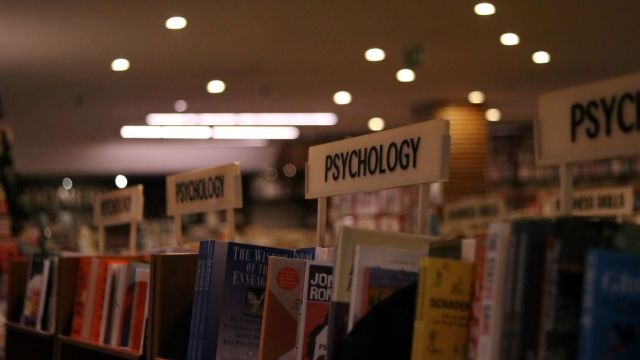Nuke maps show what a nuclear bomb would do to your city

- At the end of the Cold War, we permitted ourselves to think the atomic threat had passed.
- However, as the war in Ukraine has reminded us, we cannot escape living in the Atomic Age.
- Nuclear war is hard to comprehend. NUKEMAP helps us size up the horror.

We tend to remember only the good things. That is why most 1980s nostalgia is rose-tinted. Rarely mentioned about that decade was the constant sense of dread, the ever-present knot in your stomach. Why? Because you knew that everything and everyone you knew could be over in a flash. So what, exactly, was the point of anything?
Nuclear nihilism
The nihilism of that age was nuclear-inspired. At the tail end of the Cold War, East and West pointed vast arsenals of atomic missiles at each other, powerful enough to destroy global civilization several times over.
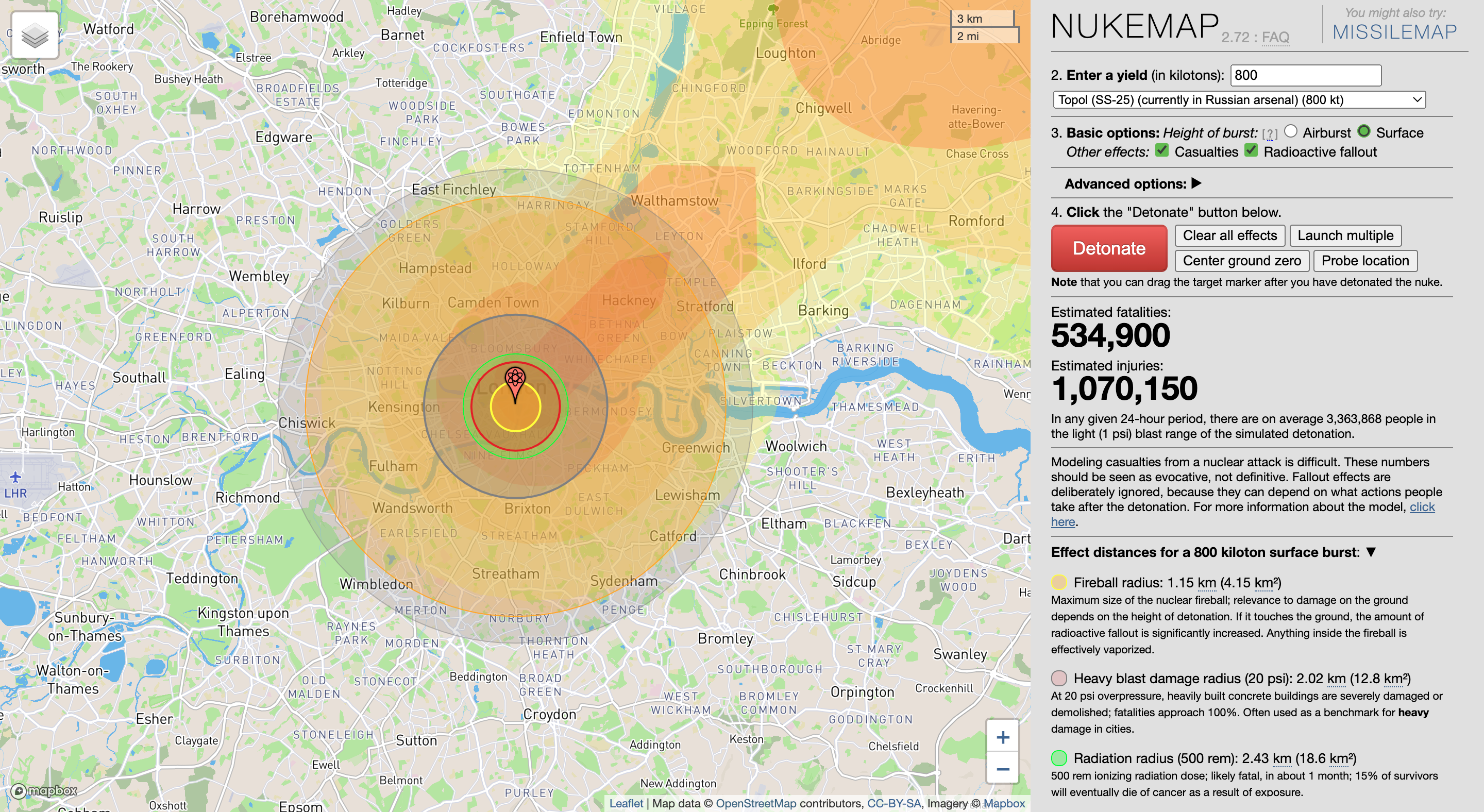
Hanging over the world like an atomic Sword of Damocles was the military doctrine of Mutually Assured Destruction — MAD for short, and mad in essence. Its rather shaky foundation was that only a lunatic would start a nuclear war.
MAD had a few obvious flaws. What if one side made the rational calculation that the other side would not be fast enough to strike back? What if there was a system malfunction resulting in an accidental launch? Or a radar glitch falsely showing an attack? And what if a lunatic actually did seize power?
Wishful thinking
But then Boris Yeltsin climbed on a tank and the Soviet Union collapsed. With it, the nuclear nightmare vanished into thin air. Except that it didn’t, really. Many happily confused the conclusion of the Cold War with the end of the Atomic Age. But that was wishful thinking. On July 16, 1945, when the first A-bomb went off in the New Mexico desert, humanity went nuclear, and we can’t unring that bell.
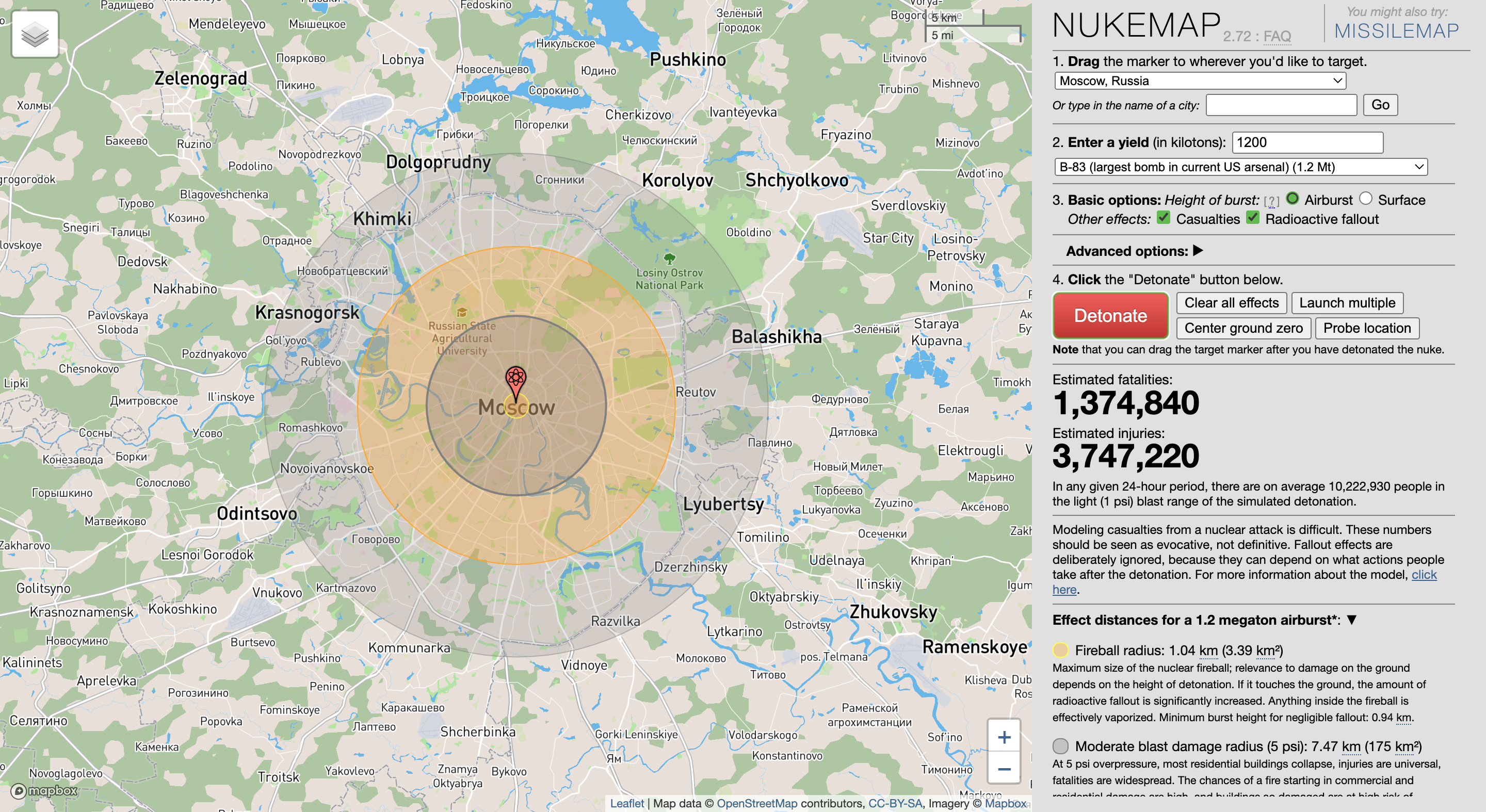
We may not like to think about it, but the nuclear threat is here to stay. That became obvious after Russia invaded Ukraine in February. Although as yet a “conventional” conflict, it has at least three atomic angles.
First, there are Putin’s not-so-subtle hints that Russia may use nukes if the West gets too directly involved and/or the tide of war starts to turn against Moscow. Those threats may not be entirely credible, but nobody is in a hurry to find out. In other words, they have proved effective at limiting the shape and size of third-party responses to the war.
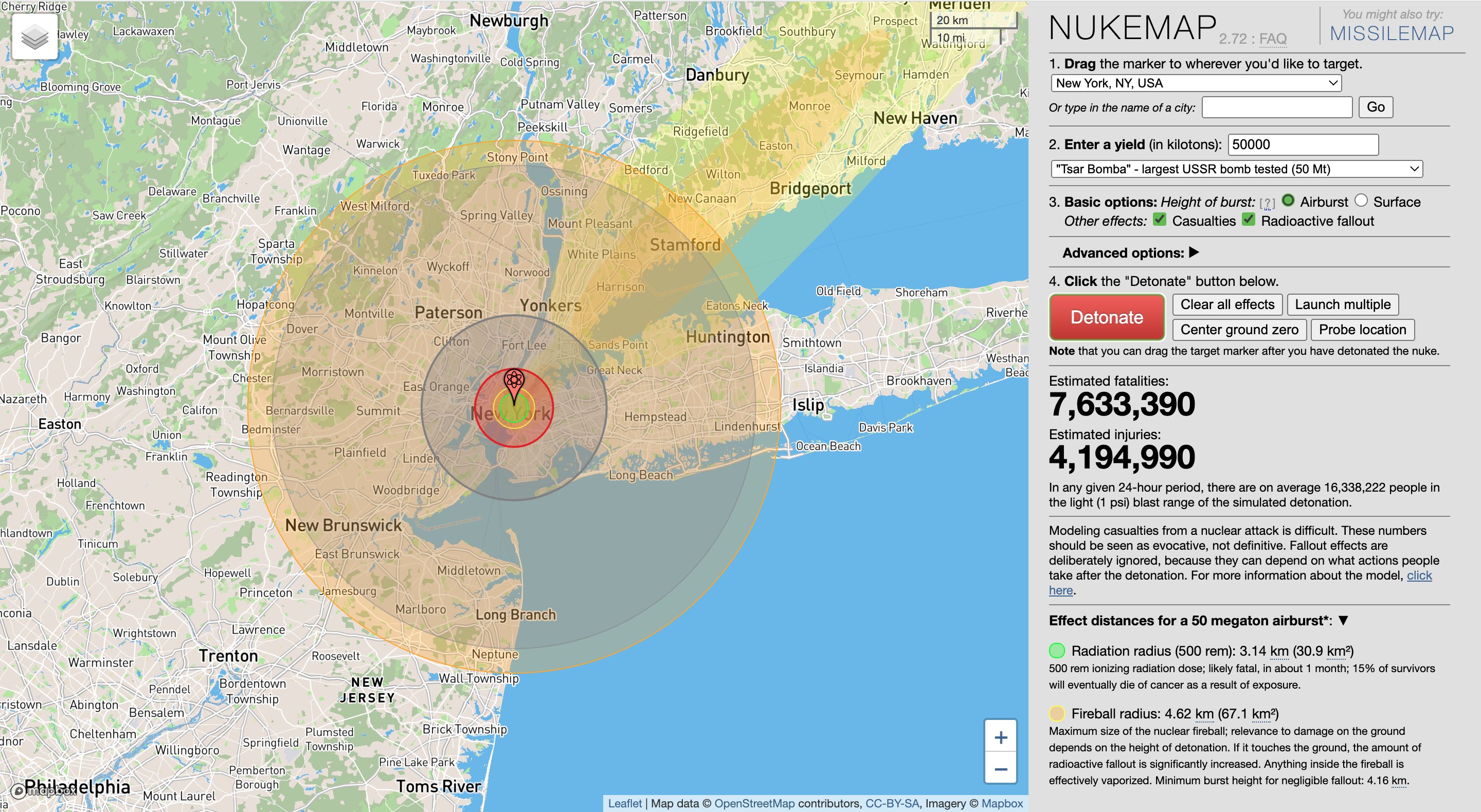
Second, there are the nuclear power stations on the front line being used as tactical chips in a high-stakes game of atomic poker. First Chernobyl, now Zaporizhzhia — Europe’s largest such installation, reportedly used by Russians to store material and launch attacks, and which is regularly under fire (for which both sides hold the other responsible). A few days ago, according to Ukraine’s president Volodymyr Zelensky, a “radiation accident” was only narrowly avoided.
Going nuclear as a precaution
Finally, there’s the sobering thought that this war might not have happened at all, had Ukraine not given up the nuclear stockpile it inherited from the Soviet Union. It did so in 1994, in return for security guarantees by the U.S., the UK, and Russia. Clearly, other countries now see what such guarantees are worth and may be considering going nuclear themselves as a precaution.

The worst solution to a seemingly intractable problem is to ignore it. A long, hard look is better — at least the issue won’t be trivialized, and perhaps there is hope behind the horror.
In that spirit, welcome to NUKEMAP. Using declassified info on the impact of various types of nuclear weapons, this web tool allows users to model a nuclear attack on a target of their choice. NUKEMAP was created in 2012 by Alex Wellerstein, a professor of Science and Technology Studies at the Stevens Institute of Technology in Hoboken, New Jersey. Professor Wellerstein’s particular field is the study of the history of nuclear weapons.

Talking to Newsweek, Professor Wellerstein said that NUKEMAP was meant to help people, himself included, understand the true impact of nuclear explosions: “Some people think [nuclear bombs] destroy everything in the world all at once, some people think they are not very different from conventional bombs. The reality is somewhere in between.”
“Stomach-churning,” but also fun
He has described NUKEMAP as “stomach-churning,” but also as “the most fun I’ve had with Google Maps ever.” Sounds a bit like your favorite rollercoaster ride, minus the long wait. Ready?
Go to NUKEMAP, pick a target location (the default is Lafayette Street in Manhattan’s Soho district), and then select your weapon of choice, with a variety of yields. The smallest is an unnamed North Korean weapon tested in 2006 (with a blast yield of a mere six tons — that is, equivalent to six tons of TNT). You can also test the one that started it all, Little Boy (15 kilotons), which was dropped on Hiroshima, as well as the largest one, the Russian Tsar Bomba (100 megaton, but never used).

You can also pick whether you’d like the bomb to explode in the air or on the ground and whether you’d like to see the number of casualties and the fallout area (yes and yes, obviously). There are a bunch of more sophisticated settings, but by now your finger is itching to press DETONATE.
The effects are stomach-churning indeed: Large zones around ground zero are effectively vaporized. Thousands, hundreds of thousands, millions killed. Many more wounded.
More than 275 million detonations
Professor Wellerstein’s NUKEMAP has been around for more than a decade and has racked up more than 275 million “detonations” over that period. Unsurprisingly, there has been an uptick in visitor numbers since the start of the Ukraine War, with some days numbering more than 300,000 visitors.
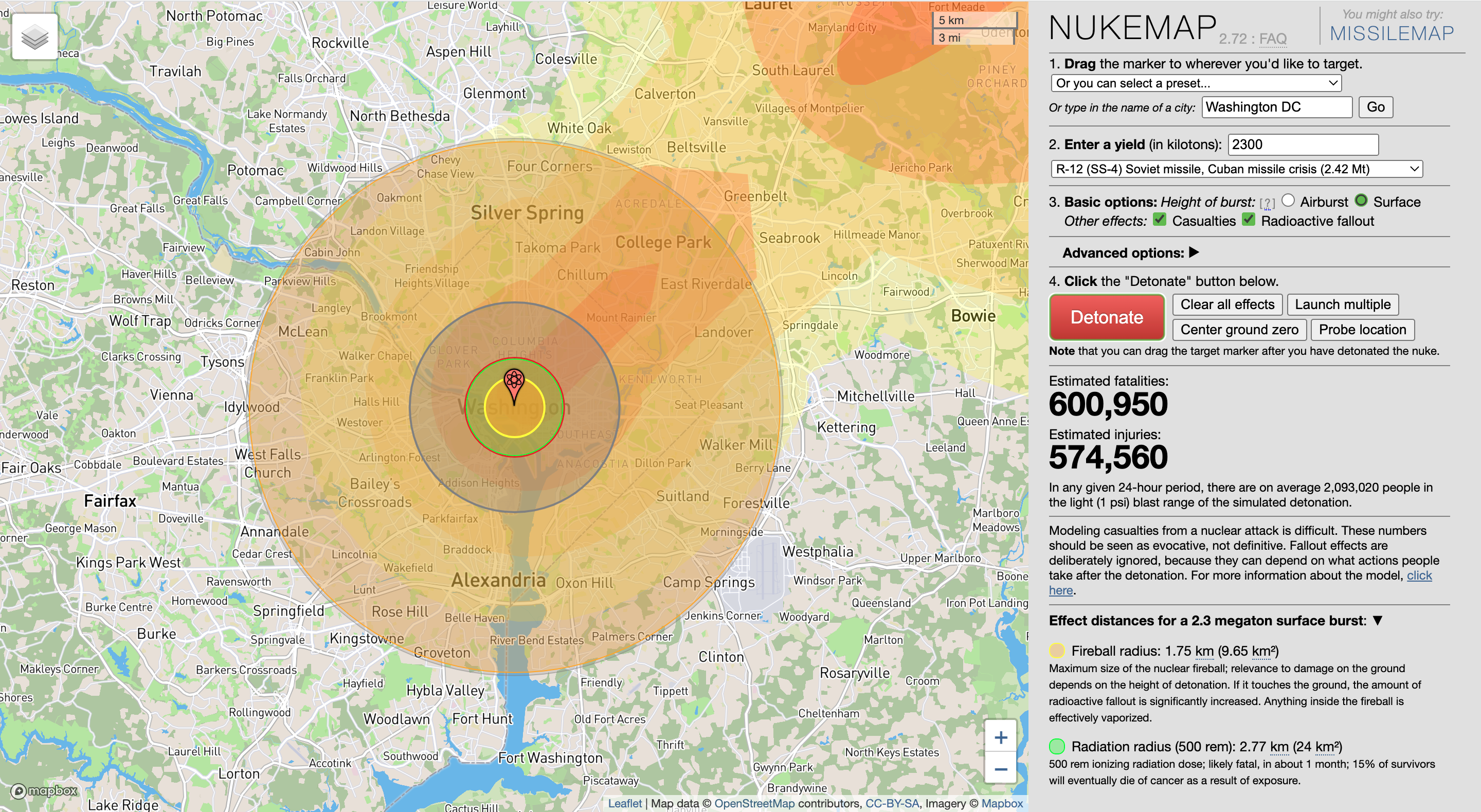
But those visitors don’t even see the worst effects of a potential nuclear war. Yes, they get a sense of the destruction and the casualties, but worse will come — and we’re not even talking about radiation.
A recent study examining the climatic effects of nuclear war found that even a limited nuclear exchange — say, an atomic war between India and Pakistan — could send up enough soot into the atmosphere to reduce global calorie production by 50% and threaten more than two billion people with starvation. A worst-case scenario — all out nuclear war between the U.S. and Russia — would result in a 90% drop for up to four years, which could result in global famine killing more than five billion.
That feeling you’ve got now: that’s what I call proper 1980s nostalgia.
Strange Maps #1167
Got a strange map? Let me know at [email protected].
Follow Strange Maps on Twitter and Facebook.
